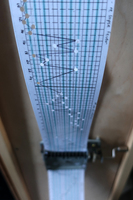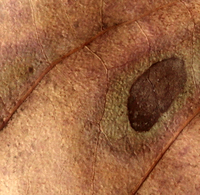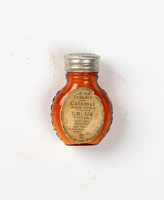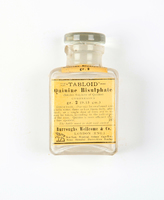Items
keywords is exactly
fever
-

Listen Laennec
"In this work, the temperature graphs of individuals suffering from malaria, yellow fever, trypanosomiasis and tickborne-relapse fever – all viewed as ‘tropical’ and treatable by the contents of the medicine chest – were converted into a musical score. I punched the strips of paper of a hand-cranked musical box mechanism with holes that corresponded to the graphs – the vertical axis representing temperature variations and the horizontal axis representing the approximate number of days the fever is said to last. The translation of these graphs into notes seems nonsensical, as we do not listen for a temperature; we measure it by feeling a forehead or taking a reading with a thermometer. The practice of listening has, however, been part of the history of medicine since the days of Hippocrates (c.460–c.370 BC), when physicians performed auscultations of the lung and heart by placing their ear directly on the patient’s chest' (Liebenberg 2021: 265). -

Clivia's in Kirstenbosch
Part of the ‘Useful plants’ section at Kirstenbosch National Botanical Garden. -

Skin
I collected leaves from the gardens around Groote Schuur Hospital and gave them to UCT dermatologist Ranks Lehloenya for analysis. Using the strategy of directing insider focus to an outsider object, Lehloenya treated these specimens as sections of skin and read them accordingly, highlighting sections that showed signs of nummular eczema, acne, ageing, miliary tuberculosis and melanoma, to name a few (Liebenberg 2021: 277). This example exhibits an annular pattern which could be an infection like a ringworm (fungus) and erythema migrans of Lyme’s disease; or inflammatory conditions like nummular eczema, erythema marginatum as seen in rheumatic fever and granuloma annulare. -

Calomel
"Alternative purgative. Use with caution. One to five of the smaller dose may be taken withh a draught of water as a cathartic and liver stimulant, or one, twice daily, as an alternative. The 5-grain dose is given in cases of jaundice accompanied by fever" (BWC 1925:122). -

Quinine Bisulphate
"Anti-malarial, tonic. In malarial fevers, one or two should be taken every two hours. In ague, one to four should be taken, followed by a glass of water, and repeated in three hours if necessary" (BWC 1925:137). -

Iron and Arsenic Compound
"Tonic. Use with caution. One to two may be taken with a draught of water, three times daily, as a tonic during convalescence from malarial fevers, or as an alternative in skin affections" (BWC 1925:129)


